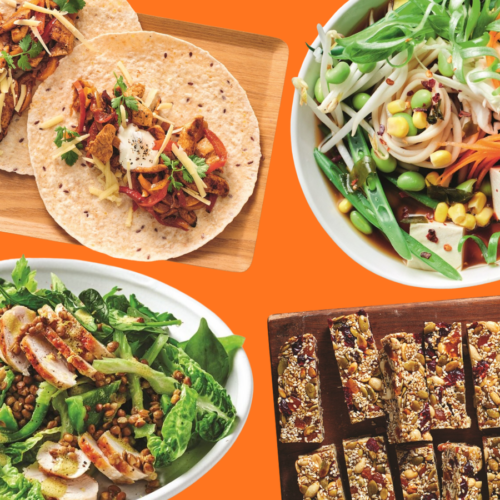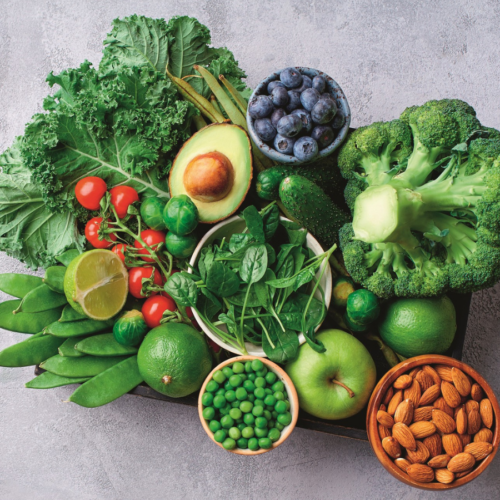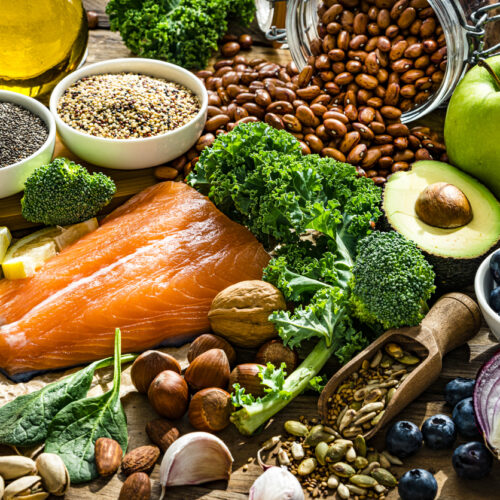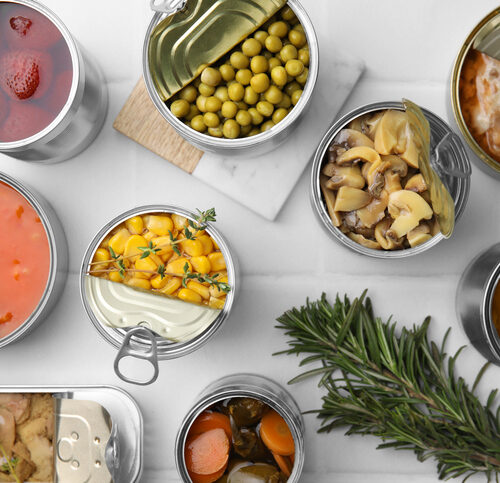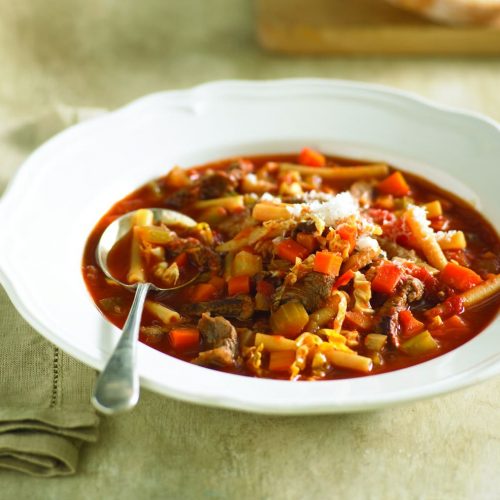
If you think healthy food has to mean expensive food, think again! The experts from simplesavings.co.nz show us how to kick-start a money-saving year, without compromising health.
Jackie Gower and Fiona Lippey, co-authors of best-selling book The $21 Challenge, are on a mission to teach households that the cheapest foods can also be the healthiest. So what is the $21 Challenge? Basically it’s a one-week exercise designed to get your food budget back on track. The idea is to spend no more than $21 (or $30, or $40) on your family’s food for one week. A total spend of $21 for one week’s worth of food may sound like an impossible target but the concept actually makes sense once you start putting it into practice.
Get started
- Go through every single item of food in your pantry, fridge, freezer and garden and write it down, disposing of any expired items along the way.
- Work out a menu plan for seven days, basing your meals around the items you have written down. Dig out your recipe books and see Money-saving recipes (below) to find ways to use things up). The object of the exercise is that you have to use all the food you already have before you can buy any more.
- Once you know what you are going to cook for the week, then, and only then, head to the shops to pick up any extra items you need to complete your meals.
The rules are simple
Don’t cheat!
The aim is to make the most out of what you already have, not go to the supermarket and stock up on everything before the week starts!
Open your eyes
So much of our money is wasted because we think we have no food, when the truth is, there are thousands of things we can make using ingredients you already have.
Limit your spending
Having a $21 food budget for a week doesn’t mean you can’t visit the shops at all – it just means that when you are there you can’t spend more than your chosen figure! For example, if four carrots are all you need to see you through for your menu plan, then buy only the four you need, not the whole bag.
Be resourceful
If you run out of bread during your Challenge, have a go at making your own from scratch. Meat is a big drain on the grocery budget, so if your family are big meat eaters, consider having at least one meat-free meal during your Challenge week.
Focus on the Challenge, rather than the figure
If you manage to stay within $21 for the week, that’s terrific! However, if you normally spend $200 or $300 on a week’s worth of food and you manage to get down to $50, $60 or even $100 when you do your first Challenge, that’s a fantastic saving, so be proud!
One of the great things about the $21 Challenge is that you really cannot fail. It’s all about getting creative, trying new recipes and learning new skills.
Doing a $21 Challenge on a regular basis can save you an easy $1000 a year but there are many more benefits. Not only will you become more creative by learning how to make delicious, healthy meals out of ‘nothing’ rather than rushing off to the shops, it’s also a great way to declutter your kitchen and reduce waste.
How to use up everything in your fridge, pantry and freezer
We all have items of food lurking unused in our kitchens. Cans that got put in our pantries and never quite made it back out. Fresh fruit and vegetables left to wither at the back of the fridge. Sound familiar? This month, make the most of the money you have invested in these foods by putting them to good use. To help you in your challenge here are some of Jackie and Fiona’s favourite ideas for turning random ingredients into delicious, low-cost meals.
Artichokes (fresh or preserved)
Artichokes are much more versatile than people think. Blend them with parmesan cheese, olive oil and chives to turn them into a healthy lunchtime dip to enjoy with pita bread, Turkish bread or crackers. Add them to your favourite quiche or frittata, or to homemade pizza. They also make a delicious addition to potato, Caesar or green salads.
Lentils
Enjoy delicious meat-free meals in no time. Canned or dried lentils are a tasty addition to any curry recipe you have at home. Simply replace 100g meat with a quarter cup of red or brown lentils when following the recipe. Add lentils to the sauce and cook for 15-20 minutes. Lentils are also a great filler and thickener for any soup or stew; just throw in a handful with your usual recipe.
Carrots
You can make a super-easy and filling carrot soup in next-to-no time. Sauté a finely chopped onion in a splash of oil. Add a handful of peeled, chopped carrots, two to three cups salt-reduced vegetable stock and season to taste. Bring to the boil and simmer for 20-25 minutes until carrots are tender. Purée in a blender and enjoy! Finely grated carrot is also a tasty addition to savoury mince recipes and gives a bright splash of colour to any
potato bake.
Chickpeas
Hands up who bought chickpeas with the intention of making hummus and then never got round to it? Crunchy and delicious, chickpeas are fantastic fillers in all sorts of dishes, not just hummus! Add cooked chickpeas to stir-fries, soups and stews – they will even bulk out your Bolognese and Chilli con carne. Chickpeas are also a brilliant addition to any curry.
Cabbage
Enjoy it for lunch in an Asian salad. Finely chop half a head of cabbage (or however much you have) along with two celery stalks and a couple of thinly sliced carrots. Mix well and stir through a handful of chopped toasted almonds or crispy noodles. Serve with a low-fat dressing. Cabbage is also ideal added to savoury mince recipes: Dice cabbage as small as you can and add to the mince mixture while cooking.
Beetroot
Beetroot tastes fantastic in a baked potato. Simply sauté a little diced onion and lean bacon in a pan and add some chopped, canned beetroot. Heat gently until everything is warmed through, then serve over a baked potato (with a dollop of reduced-fat sour cream if you have some). Sliced beetroot is also great added to steaming hot pasta along with tomatoes, mushrooms, parsley and a handful of grated reduced-fat cheese. Beetroot goes well with grated carrot, parsley, lettuce, baby spinach, tomato, chickpeas, feta and even orange. Add it to coleslaw and salads for extra colour and bite.
Cauliflower
Cauliflower is far too good to leave turning brown in the back of the fridge! Chop it into small florets and add to your favourite curry or stir-fry recipe. Give everyday mashed potatoes a nutritious boost by adding puréed cooked cauliflower for a lovely creamy texture and taste. You can also make a delicious cauliflower soup in the same way as the carrot soup – just add a peeled, chopped potato.
Courgettes
The humble courgette can go in just about any stir-fry and this vege is ideal grated into egg-based dishes such as quiche or frittata. Try making a courgette slice for lunch. You can even sneak it into chocolate cake – the kids will never know!
Dried fruit
If you think dried fruit is only for using in fruit cakes, think again. Adding dried fruit to your recipes is a great way to make your food a little more nutritious. Not only can they help to ensure you keep up your recommended 5+ a day, they also boost texture and flavour. You can use dried fruit in many recipes which call for fresh and frozen fruit.
Apricots taste delicious in a chicken sandwich (especially with a thin spread of reduced-fat cream cheese). Add chopped apricots to cooked couscous or rice for extra colour and flavour.
The warm, rounded flavour of sultanas goes really well with savoury ingredients such as meat, fish or poultry. Add a cup of sultanas to your next curry or casserole and enjoy the difference.
Sun-dried tomatoes
Sun-dried tomatoes have an unfortunate habit of getting lost in the fridge or pantry. Use them to add a touch of class to your next omelette and to jazz up salads and pizzas. Or for a tasty lunch dish, put some hot, cooked pasta in a bowl. Stir through one tablespoon of pesto. Chop half a cup of sun-dried tomatoes and mix into the pasta. Crumble a little feta cheese over the top and stir gently to combine. Add a handful of toasted pine nuts if you have them but it’s just as good without.
Corn
Canned corn seems to accumulate in large numbers in many pantries. Use it to make a delicious baked potato for lunch: combine drained corn with 100g tuna in spring water and a couple of teaspoons of reduced-fat mayonnaise. Pile on the top of steaming hot jacket potatoes. Corn is yet another handy addition to savoury mince dishes for extra colour and taste.
Eggplant
Instead of sticking your eggplant in the fridge never to surface again, slice it all up and cook the lot. Try baking it in the oven. Once cooked you can use it in anything – curries, stir-fries, even a healthy addition to homemade burgers. For a yummy lunch, mix cubed, cooked eggplant with roasted red peppers, onions and garlic and drizzle balsamic vinaigrette over the top.
Canned tomatoes
The number one most commonly found ingredient lurking in peoples’ pantries! Use them up in curries and casseroles or in a pizza sauce. This vegetarian dish is great for lunch or as an accompaniment to your main meal. Peel and chop two onions, two carrots, one courgette (optional) and 900g potatoes. Melt 75g reduced-fat spread in a large saucepan. Add the onions and sauté gently for a few minutes. Add the carrots and courgette (if using), along with a 400g can of tomatoes. Add the potatoes. Cover and cook on low heat for 30-40 minutes, stirring frequently. Add a pinch of paprika or a dash of Worcestershire sauce just before serving, for extra zing.
Four-bean mix
Four-bean mix works a treat on top of hot jacket potatoes with a sprinkling of grated reduced-fat cheese. For Mexican-style spuds, mix the beans with a generous spoonful of tomato salsa. As with chickpeas, Four Bean mix is great for making any mince dish go further. Try mixing a can of beans with garlic, onion and capsicum. Season with ground cumin or chilli powder and serve over corn chips for vegetarian nachos. Use Four Bean mix in any salad for extra colour, texture and nutrition.
Money-saving recipes
To inspire you in your challenge, these recipes are designed to use up common items found lurking in the pantry. The cost will vary, depending on what you already have, but they are all really budget-friendly.
Beans and rice
Kate’s savoury mince (with hidden vegetables)
Salmon quiche
Nutritionist tips
HFG senior nutritionist Rose Carr tells how to keep your nutrition up when doing the challenge.
- Keep in mind what makes an ideal healthy plate: half vegetables; one quarter protein foods and the remaining quarter carbohydrate foods. Use your $21 to top up the bits you don’t have – most likely vegetables.
- Frozen or canned vegetables and fruit, as well as dried fruit, can all count towards your 5+ a day. Dried fruit count as a maximum of one serve.
- When preparing vegetarian meals keep in mind that meat, milk products and eggs are complete proteins, containing all the amino acids we need, whereas grains, legumes and vegetables don’t provide complete protein by themselves. But that’s easily solved. To ensure main meals contain complete protein, serve the following combinations:
– grains: add legumes
– legumes: add grains or seeds and nuts
– seeds and nuts: add legumes
– vegetables: add legumes and grains; or legumes and seeds and nuts.
www.healthyfood.com


